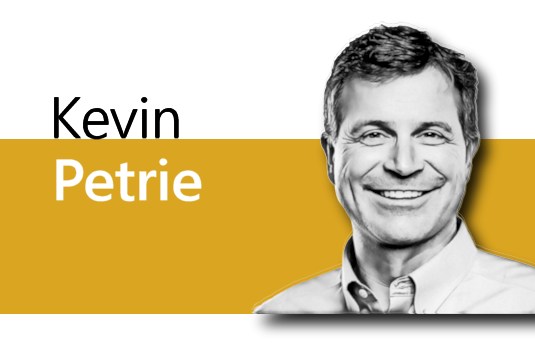
Light, Stone & a Monument that Teaches us About Data Visualization

It’s early in the morning. A pale, pinkish light creeps across the river and the great mausoleum seems to drink it in. By noon it shines very brightly; almost stark white. Then by evening it reflects a warm glow like a lantern held close to your skin. Yet the actual color of the marble itself doesn’t ever change. What could be so captivating and colorful?
You’re looking at the Taj Mahal in Agra, India, a magnificent structure that has stood for nearly four centuries. Were you to visit this place today, as you walk through the main gate, your eyes fool you, thanks to the ingenuity and design from architects of long-ago: the building seems to shift in size as if it were breathing in and out while you move. Those slender towers at each corner look perfectly upright from where you stand, yet in reality, they tip outward ever so slightly to calm the composition and guard the tomb. The story behind the monument is even more intriguing. Commissioned in 1631 by Mughal Emperor Shah Jahan as a mausoleum for his wife, Mumtaz Mahal, principal construction began in 1632. The main structure was finished by 1648, and the surrounding works continued until 1653.
 The stone itself is Makrana marble from Rajasthan, an unusually pure, calcitic stone with roughly 98 percent calcium carbonate and a delicate translucency that lets light penetrate the surface then radiate back out. Under the changing sky, the marble cycles through a daily palette: appearing pinkish at dawn, radiant white at midday, golden and amber near sunset, and, on moonlit nights, a silvery hue that sometimes looks blue-gray. On bad days the air leaves a grimy film, a reminder that even a marvel can be discolored by neglect. On good days, the marble turns the courtyard into a lesson in perception.
The stone itself is Makrana marble from Rajasthan, an unusually pure, calcitic stone with roughly 98 percent calcium carbonate and a delicate translucency that lets light penetrate the surface then radiate back out. Under the changing sky, the marble cycles through a daily palette: appearing pinkish at dawn, radiant white at midday, golden and amber near sunset, and, on moonlit nights, a silvery hue that sometimes looks blue-gray. On bad days the air leaves a grimy film, a reminder that even a marvel can be discolored by neglect. On good days, the marble turns the courtyard into a lesson in perception.
That lesson from the Taj Mahal’s design belongs in every dashboard. Sight is not a neutral instrument. What we notice first, what feels bigger or closer or more urgent, comes from cues that the data visualization designer should place with care. The builders in Agra understood that harmony is engineered, not wished into being. Chart makers live by the same truth.
Consider how your eye reads position. Put two bars on a common baseline and you can spot the leader instantly. A small difference feels obvious because the comparison happens along a shared edge. The same holds for lines on a single axis: a gentle slope tells a growth story long before you read a number. When a team argues about whether a campaign “worked,” a simple, well-placed line on that chart often answers with quiet authority.
Color joins this “conversation” as soon as you let it. In the courtyard of the monument, light sets the tone; whereas in a dashboard, color does that job. A restrained palette separates categories and lets a single accent carry the highlight. One bright thread through a field of neutrals pulls focus to the critical series without shouting. If the palette turns into confetti, the message scatters too, not as useful to the audience. Use color to group and to guide. Save the bold choice for the one thing you truly want the reader to see first.
Angles and areas tell weaker stories than length. That’s why tight comparisons falter in a pie chart. A slice that grows from 22 percent to 25 percent barely changes shape to the human eye, and yet that three-point move might matter more than anything else on the page. In one graduate student chart comparison for a project I worked on several years ago, we replaced a donut with a sorted bar chart and a thin reference line for target. The debate stopped in five seconds because the gap became visible. No one needed to squint at labels. Length did the math for us.
Layout carries meaning too. People read in patterns, usually left to right, top to bottom. Place the big idea where that journey starts. Keep related charts close together in your dashboards and styled like siblings. When panels that belong together share the same scale, color rules, and label style, the brain binds them without effort. Give your legend a “promotion” of sorts by turning it into direct labels on the lines or bars themselves. Readers should never have to zigzag between corners to decode a chart. The Taj Mahal’s gardens were not planted wildly; they were planned to lead the body and the gaze. Your grid should do the same.
Clutter drains attention. Heavy borders, loud gridlines, drop shadows, and 3D effects serve the decorator, not the reader. By contrast, a chart free of clutter feels like the Taj Mahal’s reflection pool: just a calm surface that makes the signal unmistakable with no distractions. If a line or box doesn’t add to the story, fix it or get rid of it. Replace a legend with labels. Tuck notes where the eye already lingers. Clarity is hospitality.
Data deserves honesty. Bars should start at zero. When two panels invite comparison, axes should align. If you change a scale, say so directly and explain why. When averages blur the truth, show the dots. The single outlier that explains a bad quarter or a surprising success hides inside the distribution, not in the mean. A scatter or a strip can build trust faster than a single summary number because readers can see the shape of reality. Transparency makes a chart persuasive without having to resort to theatrics.
Annotation is your voiceover. One or two sentences placed at the right location (where the trend bends or at the exact point a threshold is crossed) make pictures understandable. The best notes feel like a colleague leaning over your shoulder and saying, “Here’s the part that matters.” They do not restate the obvious. They reveal context, cause, or consequence.
All of these choices add up to an experience, and experience begins before a single mark hits the canvas. Ask yourself what you want people to grasp within three seconds. Put that idea at the head of the reading path and let position and length carry the weight. Decide what deserves emphasis and save color for that job. Choose layouts that gather related ideas without forcing the eye to commute. Remove anything that competes with the story. If you need to persuade a skeptic, show the raw pattern somewhere nearby. Integrity invites belief.
I once watched a team wrestle with a quarterly story that felt muddy. The dashboard had the right data, yet the conclusions slipped away in meeting after meeting. We rearranged nothing but the cues. A noisy palette became a quiet one with a single vivid highlight on the key product line. Pie charts turned into sorted bars against a shared baseline. We aligned axes across panels so small shifts finally looked small and big moves looked big. We added one annotation, right where churn crossed a threshold. No new numbers appeared, but the room went silent for a moment. Then the questions changed from “What am I looking at?” to “What should we try next?” That’s the pivot good visuals create: from decoding to deciding.
Let’s go back to that marble giant in the soft light of late afternoon. The towers still lift the corners of the scene. The stone still listens to the sky. Perspective still nudges your gaze toward the center. And behind the spectacle runs a human story: an emperor building a resting place for his beloved, a project that took sixteen years for the main work and another five for the finishing touches, now celebrated among the New Seven Wonders of the World. Nothing about the facts changed between sunrise and sunset; but the experience changed because context and design shaped how you saw. Data deserves that same respect. Numbers do not speak for themselves. We teach the eye how to read them.
So choose your cues with the same care a master builder gives to proportion and light. Let aligned baselines and honest scales do the heavy lifting. Let color organize the room and highlight the one idea you want remembered on the walk back to the car. Group what belongs together. Trim what distracts. Annotate with a human voice. Do this, and your charts won’t feel like pictures of data. They’ll feel like places where decisions begin.
When the day fades and the courtyard quiets, the Taj Mahal keeps teaching. Design is a promise. It says, “I will guide your attention. I will make the important thing unmistakable.” Keep that promise in your dashboards, and the truth will meet your reader halfway.

 - by
- by







